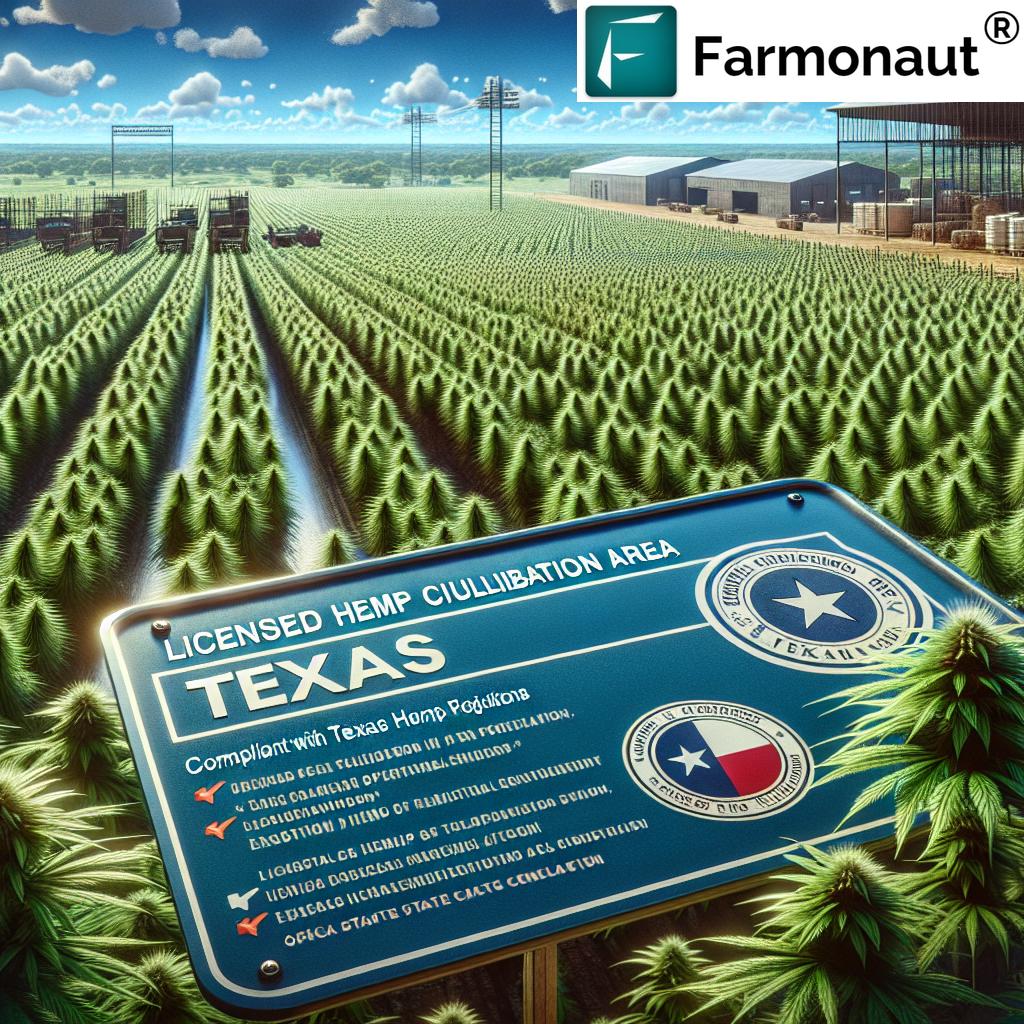Best Fertilizer for Kentucky 31 & Ag Equipment Loans KY: 2025 Guide to Yield, Sustainability & Technology
“In 2025, advanced fertilizers can boost Kentucky 31 fescue yields by up to 18% with precision application.”
Table of Contents
- Introduction: Kentucky 31, Resilience, and Innovation in 2025
- Best Fertilizer for Kentucky 31: Complete Nutrient Solutions
- Precision Nutrient Management for Kentucky Soils
- Ag Equipment Loans Kentucky: Empowering Modern Farm Operations
- Best Water Soluble Fertilizer for Oil Palm: Advanced Fertigation Approaches
- Farmonaut Satellite Technology: Optimizing Fertilizer Use & Access to Loans
- Comparative Analysis: Advanced Fertilizers & Ag Equipment Loan Options for Kentucky 31 in 2025
- Conclusion: Integrating Technology, Finance, and Sustainability
- Frequently Asked Questions
Introduction: Kentucky 31, Resilience, and Innovation in 2025
Kentucky 31 fescue stands out as a foundational cool-season grass, among the most widely used species in pastures and hay fields, not only across Kentucky but throughout the southeastern and central regions of the United States. Its storied reputation as a resilient, adaptable, and drought tolerant grass makes it a staple of both traditional and modern forage production systems.
The agricultural landscape in Kentucky is rapidly evolving, with 2025 poised to mark a new era of technology-driven, sustainable farming. A key component of this evolution is precision nutrient management:
- Ensuring optimum soil fertility and fertilizer efficiency
- Utilizing advanced ag equipment to maximize yields
- Integrating intelligent financial solutions such as ag equipment loans Kentucky farmers can rely on
With global challenges such as changing climate, fluctuating commodity prices, and increased scrutiny on environmental sustainability, land managers and decision-makers must approach nutrient management and equipment financing with an innovation-first mindset. In this comprehensive 2025 guide, we cover:
- Best fertilizer for Kentucky 31: Nutrient strategies, recommended formulations, and seasonal management tips
- Efficient water-soluble fertilizer for oil palm plantations: Nutrient blending, fertigation, and micro-nutrient management
- Agricultural equipment loans in Kentucky: Latest programs, interest rates, eligibility, and steps to access modern ag tech
- How we at Farmonaut offer data-driven tools with satellite monitoring, real-time AI advisory, and digital ag management
By the end of this blog, you’ll gain actionable insights, backed by 2025 recommendations, to maximize your yield, profit, and soil health while advancing toward a technology-empowered, sustainable future in Kentucky agriculture.
Best Fertilizer for Kentucky 31: Complete Nutrient Solutions for Maximum Yield
The key to thriving Kentucky 31 pastures and hay fields lies in deploying a fertilizer program that targets the grass’s primary nutrient demands, reflects seasonal and soil needs, and facilitates sustainable growth into 2025 and beyond. Selecting the best fertilizer for Kentucky 31 impacts not only forage yield and quality but also soil health and long-term productivity.
1. Understanding Kentucky 31’s Nutritional Needs
Kentucky 31 fescue is famed for its resilience and adaptability across various soil types. However, to achieve optimum productivity:
- Nitrogen (N): Drives vigorous leafy growth—the main source of forage nutrition for livestock.
- Phosphorus (P): Essential for root development and reproductive vigor.
- Potassium (K): Supports disease resistance, stress tolerance, and strong growth.
2. Kentucky 31 Fertilizer Recommendations for 2025
With modern knowledge and environmental priorities, a balanced approach is recommended for Kentucky 31 in 2025:
-
Nitrogen (N):
- Apply 40-60 pounds per acre in early spring to jumpstart growth.
- Follow with another 40 pounds per acre approximately six to eight weeks later – split applications optimize uptake and reduce loss.
-
Phosphorus (P):
- Base rate on soil test results.
- General guidance: 30-50 pounds per acre if tested levels are deficient.
-
Potassium (K):
- Usually 40-60 pounds per acre based on requirements and test levels.
-
Lime:
- Incorporate if soil pH is below 6.0, to enhance nutrient availability and uptake.
Enhanced efficiency fertilizers are trending, including slow-release nitrogen and stabilized formulations that reduce volatilization and leaching. These advanced products are especially valuable in Kentucky’s variable climates and rolling landscapes.
3. Adapting Fertilizer Programs for Diverse Soil Types in Kentucky
Kentucky features varied soil types: from limestone-rich bluegrass soils in central regions, to Appalachian uplands—each responding differently to fertilizer applications. Soil testing is the crucial first step:
- Conduct regular soil tests (every 2-3 years) for pH, nitrogen, phosphorus, and potassium.
- Adjust fertilizer rates based on soil test recommendations for site-specific management.
- Monitor for zinc, magnesium, and micronutrient deficiencies especially on clay or sandy soils.
Balanced nutrition and precise application timing minimize excessive stem growth and promote leafy forage—the core objective for graziers and hay producers.
Precision Nutrient Management for Kentucky Soils: Fertilizer Types, Application Strategies & Technology
New technologies and advanced fertilizer products have transformed how Kentucky 31 is managed for 2025 and beyond.
1. Fertilizer Formulations Trending in 2025
- Slow-Release Nitrogen (SRN): Gradually provides N over an extended period, reducing the risk of fertilizer loss and environmental impact.
- Stabilized Nitrogen Products: Contain urease and nitrification inhibitors that enhance nutrient efficiency and lower emissions.
- Liquid Fertilizers: Easily incorporated via fertigation or foliar application for highly responsive management.
2. Timing and Methods for Kentucky 31 Fertilizer Application
Proper timing of fertilizer application is just as critical as the type of fertilizer. We recommend:
- Spring: Apply the first dose of NPK when soil temperatures consistently reach 50°F.
- Late Spring/Early Summer: Second N application for mid-season boost.
- After Each Hay Cutting: Apply a maintenance dose to restore depleted nutrients.
- During Rainy Conditions: Avoid applications as nutrients may leach.
For maximum efficiency, adopt precision agriculture tools:
- Soil sensors for real-time nutrient status
- GPS-guided spreaders for uniform covering
- Satellite imagery-based crop monitoring solutions (see how Farmonaut’s crop advisory offers real-time health data)
Advanced technologies empower Kentucky farmers to target nutrient hotspots, reduce waste, and support environmental compliance under emerging fertilizer use regulations in 2025.
3. Environmental and Economic Benefits of Modern Fertilizer Management
Optimizing fertilizer applications with technology and data brings dual advantage:
- Environmental: Farmonaut’s real-time carbon footprint monitoring supports compliance, conservation, and ecosystem health.
- Economic: Reduce fertilizer costs and maximize returns with fewer, better-targeted applications; advanced analytics equip farmers to identify areas of high ROI and risk.
Key Takeaway: The best fertilizer for Kentucky 31 is only as good as your strategy for applying it. Combine soil testing, split-dose applications, advanced products, and data-driven management to unlock full yield and quality potential in 2025.
Ag Equipment Loans Kentucky: Financing Modernization for Yield, Efficiency & Profitability
“Over $120 million in ag equipment loans were approved in Kentucky in 2024, fueling tech-driven farm upgrades.”
Adopting the latest fertilizer technologies and modern agricultural equipment can dramatically boost both productivity and sustainability—but requires significant capital investment. Access to affordable ag equipment loans Kentucky farmers can trust is thus central to advancing tech adoption throughout the state.
Why Invest in Modern Ag Equipment in Kentucky?
- Automated fertilizer spreaders reduce labor and improve uniformity
- Forage harvesters tailored for Kentucky 31 boost hay quality and output
- Variable-rate applicators maximize fertilizer efficiency
- Fertigation systems and sensors drive “just-right” nutrient timing
- Precision tractors and field analytics from services like Farmonaut’s fleet management module streamline operations, cut costs, and support sustainability
Thanks to robust state programs, banks, and credit unions, Kentucky has a healthy lending climate for agricultural equipment finance in 2025.
Main Agriculture Equipment Loan Types in Kentucky
- Term Loans: Structured repayment (often 3-7 years) at competitive rates
- Operating Lines of Credit: For seasonal equipment purchases or upgrades
- Government Programs: USDA-backed and Kentucky state-specific funds with low-interest rates and lenient eligibility for small- to mid-size farmers
- Farm Equipment Leasing: Flexible, may require less up-front capital, ideal for rapidly changing tech
Eligibility and Best Practices for Ag Equipment Loans Kentucky
- Proof of farming operation and/or income
- Creditworthiness—generally, a FICO score of 650+
- Clear business plan or demonstrated need for the equipment
- Some lenders leverage satellite-based verification tools such as those available via Farmonaut APIs for remote, secure validation (see Farmonaut’s crop loan and insurance tools)
Lenders appreciate borrowers using technology and data—demonstrating efficient, sustainable management increases loan accessibility and success rates for Kentucky farmers in 2025.
Quick-Access Resources:
- Farmonaut API for integrating satellite and farm management tools into your loan or insurance decision process
- Developer Docs for building custom finance and verification solutions
Best Water Soluble Fertilizer for Oil Palm: Advanced Fertigation, Blends & Micro-Nutrient Management for 2025
While Kentucky 31 commands the spotlight in temperate zones, oil palm is critical across tropical regions—notably in the Americas, Africa, and Asia—for sustainable oil production. Why include oil palm fertilizer insights in a Kentucky-focused blog? Best practices in nutrient management, fertigation, and technology adoption are shared globally, and Kentucky farmers can adopt similar progressive techniques for their specialty crops.
1. Water Soluble Fertilizer: Definition & Benefits
- Water soluble fertilizers deliver N, P, K, and essential micronutrients rapidly through irrigation or directly to soil/root zones.
- Excellent for integrating with fertigation systems—supporting precise, real-time correction of nutrient deficiencies.
- Reduces wastage and improves nutrient uptake efficiency—a principle now spreading to progressive Kentucky hay and forage systems.
2. Nutritional Demands: The Ideal Formulation
- Typical blend: 20-20-20 (N-P-K) with added Mg, Zn, and boron, or custom formulations based on soil test and plantation needs.
- Magnesium sulfate to support healthy chlorophyll and growth—increasingly vital in intensively cropped soils.
- Micronutrients: Boron, Zinc, Manganese for fruit set, oil quality, and disease resistance.
3. Fertigation Systems: Lessons for All Regions
- Automated fertigation synchronizes NPK delivery with growth stages for maximum efficiency and minimal waste.
- Farmonaut’s advisory services (available via our android and iOS platforms) deliver satellite-derived insights to optimize irrigation and fertilizer timing—reducing costs and environmental burdens.
- By 2025, expect sensor-guided fertigation and on-demand custom blends to become standard among progressive plantations.
For Kentucky 31 and oil palm alike: The trend is crystal clear—precision agriculture and advanced nutrient formulations are the fastest route to higher productivity, better quality, and sustainable soil health.
Farmonaut Satellite Technology: Next-Level Farm Monitoring, Resource Management, and Ag Loan Support
As producers adopt advanced fertilizers, better formulations, and precision nutrient management, real-time insights and farm analytics become indispensable. That’s where Farmonaut’s suite of satellite-based, AI-driven tools empower Kentucky farmers and land managers in 2025:
- Instant NDVI crop health maps for Kentucky 31 from field to field
- Accurate soil moisture and nutrient deficiency alerts—direct to your phone or browser
- Blockchain-based traceability to validate output & build transparent supply chains (discover traceability benefits for premium hay and livestock products)
- AI-driven advisory systems (like Jeevn AI) recommend optimal fertilizer timing, products, and environmental actions
- Fleet and resource management tools to optimize ag equipment usage and support tech-enabled loan documentation (see Farmonaut’s large-scale farm management platform)
- Completely modular and scalable—from individual farms to entire production networks
- API integration so banks and insurance providers can verify farm assets via satellite for secure, rapid ag equipment loans (see details here)
Quick fact: Farmonaut is not a retailer, online marketplace, or equipment supplier—our role is to provide data-driven insights, monitoring, and advisory to make Kentucky’s farming smarter and more sustainable.
Affordable Access: Farmonaut Subscription Options
Our satellite-powered solutions are accessible via simple subscriptions—see below for pricing or visit our main page for details:
Comparative Analysis: Advanced Fertilizers & Ag Equipment Loan Options for Kentucky 31 in 2025
| Fertilizer/Product Name | Key Nutrients/ Technology |
Estimated Yield Improvement (%) | Soil Health Impact (Score 1-5) |
Loan Provider/ Type |
Estimated Loan Interest Rate (%) | Loan Term (Years) | Eligibility Criteria (Summary) |
|---|---|---|---|---|---|---|---|
| Enhanced Efficiency Fertilizer (SRN) | Slow-Release Nitrogen (N) | 15-18% | 4 | N/A | N/A | N/A | Apply based on soil tests; best for split spring applications |
| Stabilized NPK Blend (Custom) | Balanced N-P-K + Stabilizers | 12-16% | 5 | N/A | N/A | N/A | Tailored to site needs, supports overall soil health |
| Liquid Fertilizer for Precision Application | N, P, K (varied); foliar/soil | 10-15% | 3 | N/A | N/A | N/A | Best for in-season corrections; mobile and responsive |
| Water Soluble Fertilizer (Oil Palm Use) | 20-20-20 + Mg, Zn, B | 14-16% | 4 | N/A | N/A | N/A | Supports complete nutrition via fertigation |
| Variable Rate Spreader (Equipment) | Precision Delivery – GPS Guided | 15% | 4 | Farm Credit/Lending Bank – Term Loan | 4.1 – 5.9% | 3 – 7 | Active farm operation, FICO≥650, equipment need justified |
| Forage Harvester (Upgraded) | Automated, Hi-Capacity | 10-13%* | 5 | USDA/State Ag Loan, Equipment Leasing | 3.7 – 5.8% | 2 – 6 | Production history, Kentucky-based, good financials |
| Fertigation System (Smart) | Automated, Sensor-Based | 12-17% | 5 | Local Bank, Manufacturer Financing | 4.5 – 6.5% | 2 – 7 | Farm registration, irrigation access required |
*Yield improvement estimates vary by farm size and pre-upgrade baseline.
Conclusion: Integrating Technology, Finance, and Sustainability for Kentucky’s Future
The path to thriving Kentucky 31 pastures and advanced forage systems in 2025 runs through a well-chosen fertilizer program, adoption of modern equipment and technology, and smart utilization of ag equipment loans Kentucky farmers can trust. As the sector evolves:
- Split-dose, slow-release nitrogen and custom NPK blends lead in yield and efficiency
- Soil testing and sensor-guided applications are non-negotiable best practices
- Banking, state, and leasing programs bring modern tractors, spreaders, and fertigation systems within reach
- Farmonaut’s technology stack—offered via web, Android, iOS, API—makes real-time decision support and remote farm monitoring affordable and accessible for every Kentucky operation
Kentucky’s future in agriculture is data-driven, sustainable, and globally relevant: The combination of advanced fertilizer strategies and innovative financing will propel Kentucky farming to higher yields, greater profits, and a leadership position in environmental stewardship.
Kentucky Farmers: Start Your Digital Transformation Today
Ready to upgrade your operation? Get started with our full-featured web and mobile satellite apps for instant crop health, farm management, and supply chain traceability. For developers and ag professionals, integrate our analytics into your workflow using the Farmonaut API and developer documentation. And for those scaling up with larger acreage or fleets, explore our large scale farm management platform.
Frequently Asked Questions (FAQ)
What is the best fertilizer for Kentucky 31 fescue in 2025?
The best fertilizer for Kentucky 31 is typically a balanced NPK formula (nitrogen, phosphorus, potassium) with split nitrogen doses (40-60 pounds per acre in spring, and 40 more after 6-8 weeks). For peak efficiency and minimum loss, use enhanced efficiency or slow-release nitrogen fertilizers and base phosphorus and potassium rates on soil test results. Incorporate lime if pH is below 6.0.
How do I apply fertilizer for Kentucky 31 pastures for best results?
Apply nitrogen in split doses: half in early spring, half after the first flush of growth or first hay cut. Follow phosphorus and potassium recommendations based on soil test results. Always check soil pH and apply lime if needed. Use GPS-guided or variable-rate applicators for most precise & efficient coverage.
What is the best water soluble fertilizer for oil palm in 2025?
A high-quality water soluble fertilizer for oil palm should supply balanced NPK (often 20-20-20), plus tailored micronutrients like magnesium, boron, and zinc. Magnesium sulfate is often applied separately for chlorophyll production. Adapt the formula to your soil test and plantation needs for best results. Fertigation systems ensure maximum uptake efficiency and sustained, healthy palm oil production.
What are current ag equipment loan rates for Kentucky farmers and how do I qualify?
As of 2025, most ag equipment loan rates in Kentucky range from 3.7% to 6.5% (depending on lender and program). Terms are usually 2 to 7 years. To qualify, maintain a good credit score (typically 650+), show proof of a registered farming operation, and provide justification for the new equipment. Many lenders leverage satellite tools, like those from Farmonaut, for verification and risk reduction.
How does Farmonaut help Kentucky farmers with fertilizer management and loans?
We at Farmonaut provide satellite-driven field monitoring, instant soil and vegetation health diagnostics, AI-based fertilizer timing recommendations, blockchain traceability for supply chains, and digital resource/fleet management tools. Our data and analytics support optimal fertilizer decisions and simplify loan applications for Kentucky farmers by enabling rapid verification and enhanced credibility.
For more support on technology-driven farm finance, precision fertilizer strategies, and yield optimization, start your free trial of our satellite-powered monitoring and management tools on web and mobile today!













